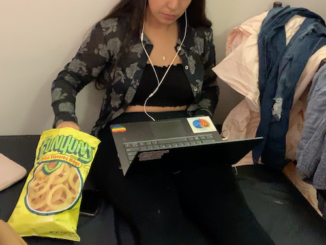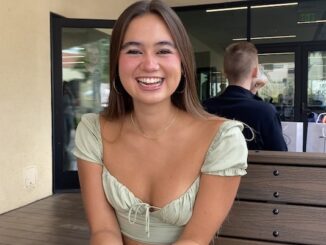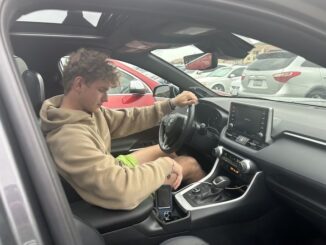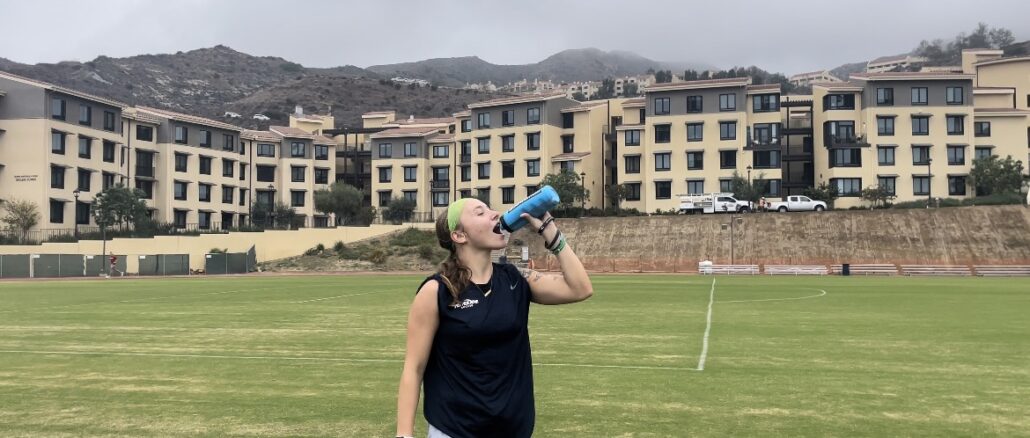
Student athletes need more than just electrolytes to get them through the school year.
Collegiate athletes juggle travel, games, practice, classwork and exams. Often, in-season student-athletes have to miss class to compete, which affects their relationships with peers and professors, and their ability to learn and engage in class.
“If you are there, it’s just easier to understand material,” said Alex Sampson, a junior psychology major and outside backer on the women’s soccer team.
Despite these challenges, athletes said communication with professors, the recent switch to online materials, and the Athletic Department’s academic advisors and counselors help them not only survive, but thrive.
In-season athletes miss numerous classes
In-season Pepperdine athletes miss one-third of all classes on average, creating challenges and disadvantages.
“I would definitely say 35% of classes are missed — 35 to 40%,” said William Mouw, a senior communication major and men’s golfer.
Missing up to eleven classes in one semester creates a massive discrepancy between other students, who are usually permitted two unexcused absences.
“Because of their participation in athletics, there are times where they have to miss class more than the normal student,” said Jordan Holm, assistant athletic director for academics and chaplain for student-athletes.
Missing class would seemingly correlate directly to poorer grades, but effort is everything.
“Academically, athletes do three-tenths of a grade point worse than regular students in three out of 10 classes,” Nicole Grimit wrote in a 2014 journal article at South Dakota State University.
Pepperdine athletes must maintain at least a 2.0 GPA and cannot be failing any single class in order to participate in athletic events, which Holm said motivates many student-athletes to perform academically.
“We want student-athletes to be their own advocate,” Holm said.
All three athletes are committed to excelling in both academics and athletics.
“I want to work hard at my golf,” Mouw said. “But I want to give it my all in the classroom as well.”
Athletes over communicate with professors
In order to improve their likelihood of classroom success, athletes said they communicate frequently with professors.
“I have to reach out to my professors ahead of time and talk to them about arrangements on when I can do it to make up for tests,” said Matthew Walsh, sophomore accounting major and center defender on the men’s water polo team.
This creates flourishing relationships among athletes and professors.
“Ironically, I find it easy to get to know student-athletes,” Advertising Professor Brian Hemsworth said. “I find that their absence is not a hindrance in getting to know them.”
Because Pepperdine requires student-athletes to communicate absences and officials encourage them to seek accommodations outside of class time, athletes often build closer relationships with professors than they otherwise would have due to one-on-one assistance.
“I feel like as a student-athlete and on the women’s soccer team, we make it a big priority to have a good relationship with the professor,” Sampson said.
This outreach allows professors to better accommodate absences and missed assignments.
“If nothing else, they do meet with me more often and communicate with me more often,” Public Relations Professor Klive Oh said.
Both Hemsworth and Oh said they respect student-athletes, understanding their commitment to representing the university well, which leads them to sympathize with, support and accommodate athletes.
Athlete absence affects peer relationships
The absences harm student-athlete relationships with their peers, and hinder their participation in group projects.
When professors assign group projects, and groups begin to collaborate in meetings, the student-athlete schedule rarely allows for attendance.
“That doesn’t mean I don’t want to participate in the group,” Mouw said. “It just means I have to practice. I have to play.”
Athletes have to form good relationships with peers in order to have a connection to class notes, exercises and more.
“I have to develop really good friendships in class that, if I do miss, they can share the notes,” Mouw said.
Because athletes tend to be in friend groups with other athletes, travel forces these students to branch out.
“It also puts you in a position where you kind of have to reach out and talk to other people besides the people that you would already know in a class,” Sampson said.
Remote learning helped athletes stay connected
All three athletes said the temporary switch to online materials during the COVID-19 pandemic allowed them to slow down, absorb material and be present more.
“If we were on the road last year, we could just hop on a Zoom call and be in the class and be as engaged as all the other students instead of having to miss,” Walsh said.
Despite the lack of human interaction found in in-person classes, remote learning made life as an athlete much easier.
“I missed seeing people in person, but as an athlete I believe that it helped me learn a lot because I could attend every class,” Mouw said.
In-person classes have — for the most part — made a complete recovery, but many professors continue to use online resources and tactics learned during the pandemic.
“Since COVID, I post a lot more notes and resources on Courses than I used to,” Hemsworth said.
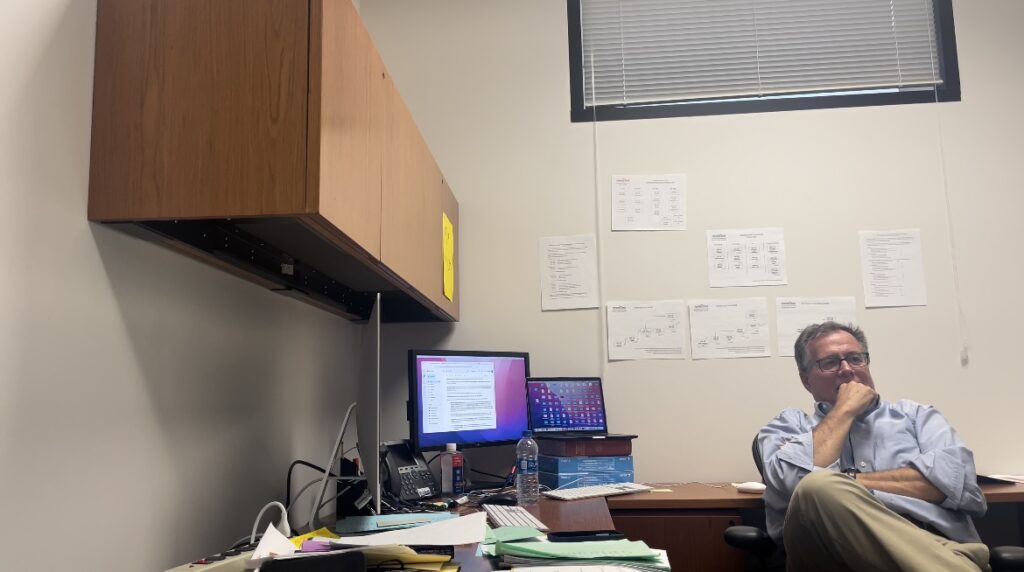
Online resources allow traveling athletes to remain connected.
Because athletes are consistently traveling, they must find other spaces and times to complete work outside of Payson Library.
Sampson said she uses the study hours her coaches give her on the road and spare time before or after games and in the airport or hotel to complete assignments.
Although two of the athletes prefer to complete makeup exams before or after travel days, Sampson said her team has previously traveled with a proctor, which allows the team to take exams during travel.
Athletic advisors help carry academic burden
Athletes have an abundance of hardships to overcome every school year, from their relationships with professors and peers to travel and time management. Because of the weight of this burden, Pepperdine offers these student-athletes advisory services and scheduling assistance. Student athletes also get to register for classes first to help them get the classes they need.
Athletic advisors work to create a balanced and feasible schedule for traveling athletes.
“It’s a big puzzle piece of selecting the courses they need to graduate, but then also trying to minimize the ones that they’re going to miss,” Holm said.
Student-athletes agreed that having academic advisors for athletics has been a helpful resource, and these counselors have done a great job at minimizing conflicts and being a source of support.
“I feel like us athletes and our academic advisors do a good job with setting up a schedule that allows us to not miss practice or games,” Mouw said.
Denae Pitts reported this enterprise story in Jour 241 during the Fall 2022 semester under the supervision of Dr. Christina Littlefield and Dr. Theresa de los Santos. Dr. Littlefield supervised the web article.


